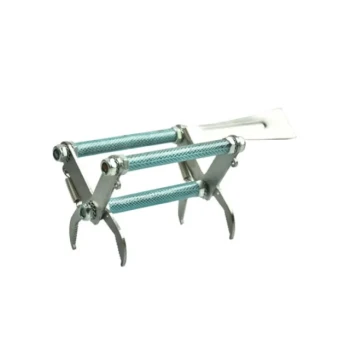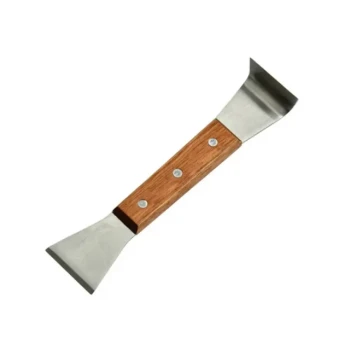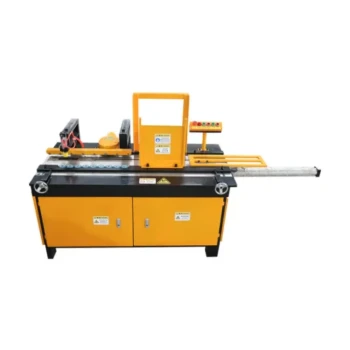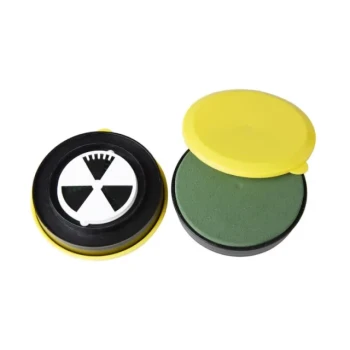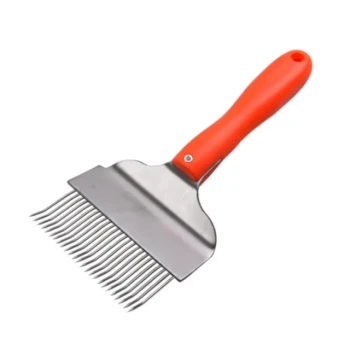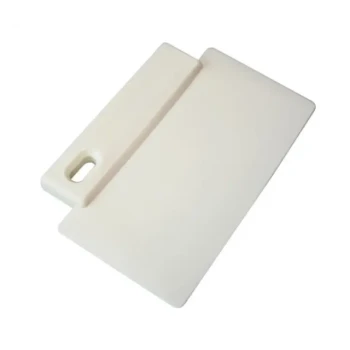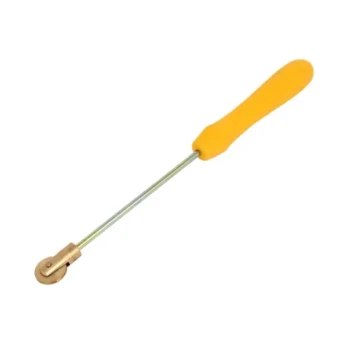At a minimum, the necessary protective gear for a beekeeper includes a veil to protect your head and face, a bee suit or jacket for your torso and arms, gloves for your hands, and closed-toed boots. This combination creates a comprehensive barrier that shields you from stings and allows you to work calmly and confidently during a hive inspection.
The purpose of beekeeping gear extends beyond simply preventing stings. It is a critical tool that fosters the calm, deliberate mindset required to work safely and effectively with a bee colony, ensuring the well-being of both the keeper and the bees.
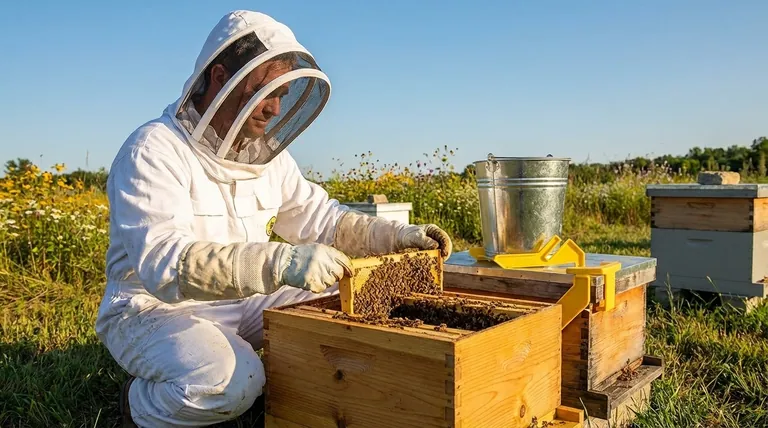
Deconstructing the Beekeeper's Armor
Effective beekeeping protection is about creating a complete, sealed system. Each component plays a specific role in shielding you from the inherent risks of working closely with thousands of bees.
The Veil: Your Non-Negotiable Shield
A beekeeping veil is the single most important piece of protective equipment. It is absolutely essential for every beekeeper.
Stings to the face, particularly around the eyes, nose, and mouth, are not only incredibly painful but can also be dangerous. The veil ensures your head and neck are fully protected, allowing you to see and breathe without risk.
The Suit vs. The Jacket: Choosing Body Coverage
A full-body bee suit offers the most comprehensive protection, covering you from your neck to your ankles. This is the standard recommendation for beginners, as it eliminates worries about exposed skin.
A beekeeping jacket is a common alternative that provides protection for the upper body. It's often paired with thick pants and offers more ventilation, but requires careful attention to ensure there is no gap at your waist where bees could enter.
Gloves: The Dexterity-Protection Balance
Beekeeping gloves shield your hands and wrists from stings. They are typically made of leather, which offers excellent protection but can reduce dexterity.
For tasks requiring more delicate handling, some beekeepers opt for thinner nitrile or latex gloves. This choice involves a direct trade-off between tactile sensitivity and sting resistance.
Footwear: Securing the Foundation
Closed-toed boots, particularly those that cover the ankle, are essential. This prevents bees that may have fallen to the ground from crawling up your legs.
The connection between your suit and your boots is a critical seal. Many suits have elastic cuffs, and some beekeepers use bands to ensure there are no gaps.
Understanding the Trade-offs and Common Pitfalls
While protective gear is fundamental, understanding its limitations and the common mistakes associated with it is crucial for true safety and effectiveness.
The Myth of "Going Gloveless"
You may see experienced beekeepers working without gloves. While this maximizes dexterity, it comes with a significantly higher risk of stings and is not advisable for most keepers.
Building confidence with full gear allows you to develop the calm handling skills that make glove-free work even possible later on. Rushing this step often leads to painful lessons.
Overheating and Poor Ventilation
A full bee suit can become very hot, especially during summer inspections. This is a real safety concern that can lead to heat exhaustion.
Modern ventilated suits offer a significant improvement in comfort. Choosing the right material and timing your inspections for cooler parts of the day can mitigate this risk.
Failing to Ensure a Secure Seal
The most common mistake is leaving a gap where bees can enter your protective clothing. The most vulnerable points are the wrists, ankles, and the connection between a veil and a jacket.
Always double-check that all zippers are fully closed and all cuffs are secure before approaching a hive. A single bee inside your veil can turn a calm inspection into a panic.
Selecting the Right Gear for Your Needs
Your choice of gear should align with your experience level, the temperament of your bees, and the specific tasks you need to perform.
- If you are a beginner: Choose a full, ventilated bee suit with leather gloves. This provides maximum protection and allows you to build confidence without the distraction of frequent stings.
- If you manage a calm, established hive: A high-quality jacket and veil combination may offer a comfortable balance of protection and ventilation for routine inspections.
- If your primary focus is on delicate tasks like queen marking: Consider using thinner nitrile gloves over your beekeeping gloves or by themselves, fully accepting the increased risk of stings for greater dexterity.
Ultimately, your protective gear is the foundation that enables you to be a better, more observant, and more effective beekeeper.
Summary Table:
| Essential Gear | Purpose | Key Consideration |
|---|---|---|
| Veil | Protects face, head, and neck from stings. | Non-negotiable for all beekeepers. |
| Suit/Jacket | Shields torso and arms; full suit offers maximum coverage. | Choose based on experience and bee temperament. |
| Gloves | Protects hands and wrists; balances dexterity and protection. | Leather for beginners, nitrile for experienced. |
| Boots | Prevents bees from crawling up legs; secures the foundation. | Must be closed-toed, ideally covering the ankle. |
Equip your apiary with confidence. HONESTBEE supplies professional-grade beekeeping protective gear and equipment to commercial apiaries and beekeeping equipment distributors through our wholesale-focused operations. Ensure the safety and efficiency of your team with our reliable supplies. Contact us today to discuss your needs and request a wholesale catalog.
Visual Guide
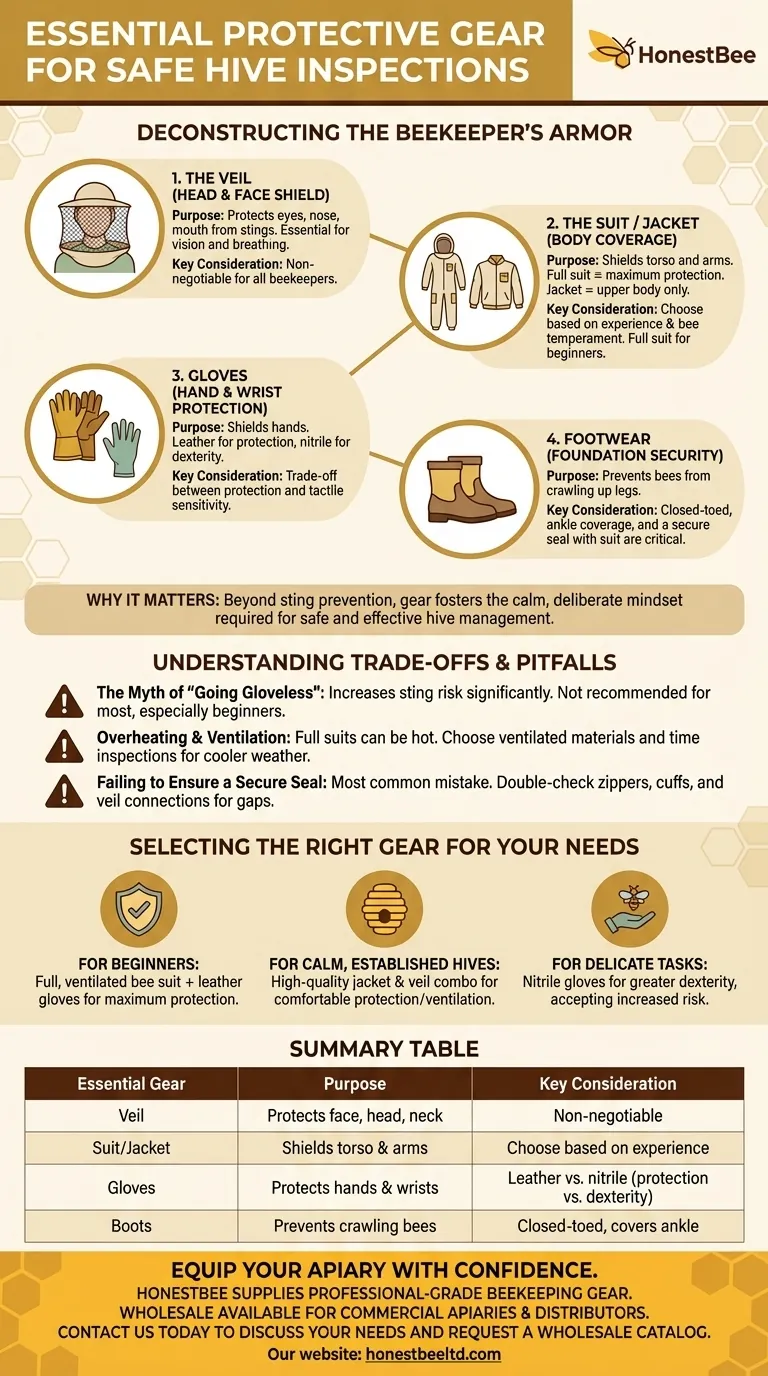
Related Products
- Yellow Plastic Bucket Pail Perch for Beekeeping
- Professional 3-Bar Frame Grip with Integrated Hive Tool
- Professional Dual-End Stainless Steel Hive Tool for Beekeeping
- Plastic Bee Hive Stand for Beekeeping
- Beehive Handle and Frame Rest Cutting Machine: Your Specialized Hive Machine
People Also Ask
- What equipment do you need to make honey? A Complete Guide to Starting Your Apiary
- What should beginners consider when purchasing beekeeping equipment? A Guide to Essential Starter Gear
- What does every bee keeper need? Your Essential Guide to Starting Strong
- What is required to be a beekeeper? Essential Equipment, Knowledge & Mindset
- How do beekeeping gloves protect against stings? Essential Gear for Apiary Safety

